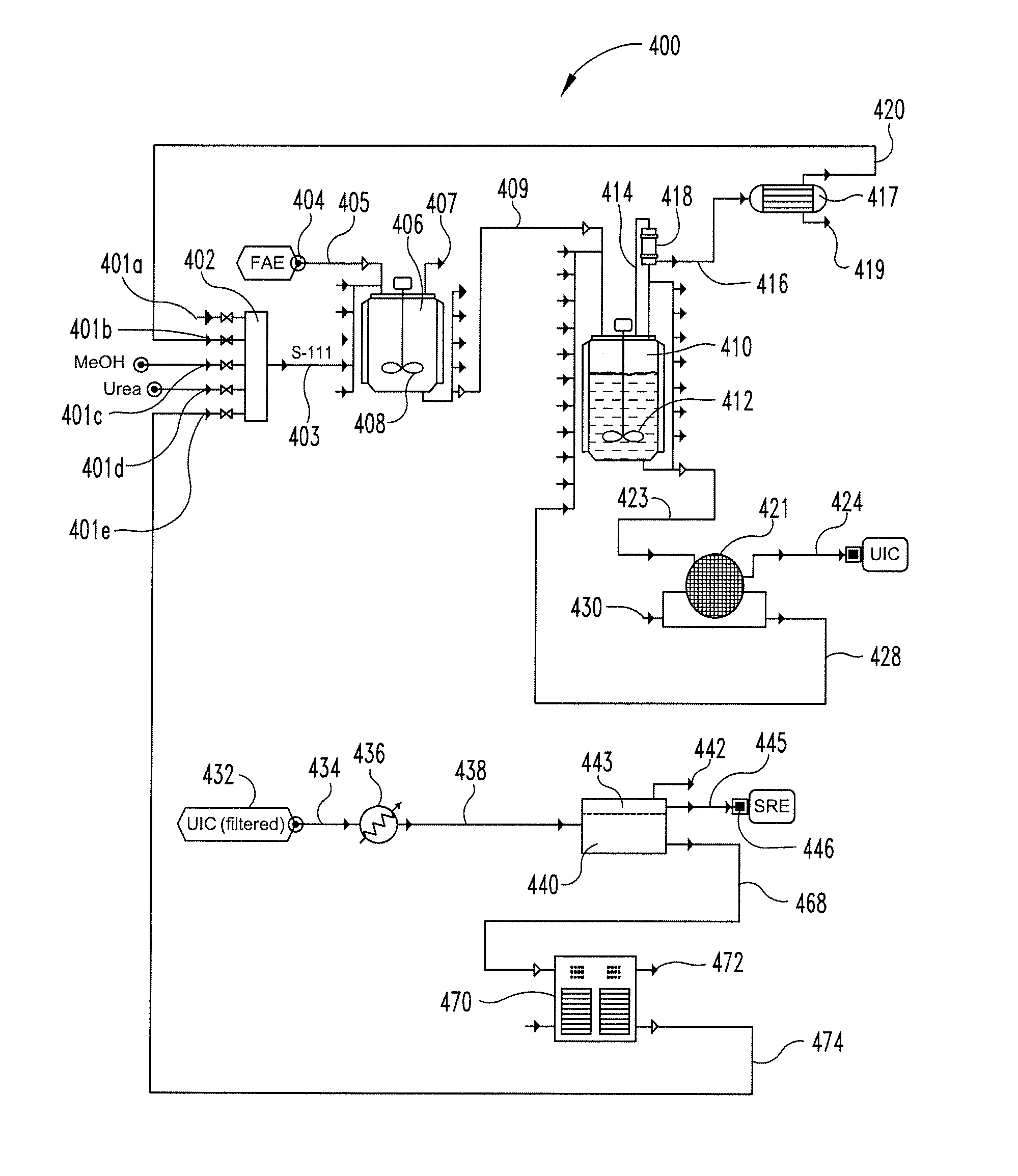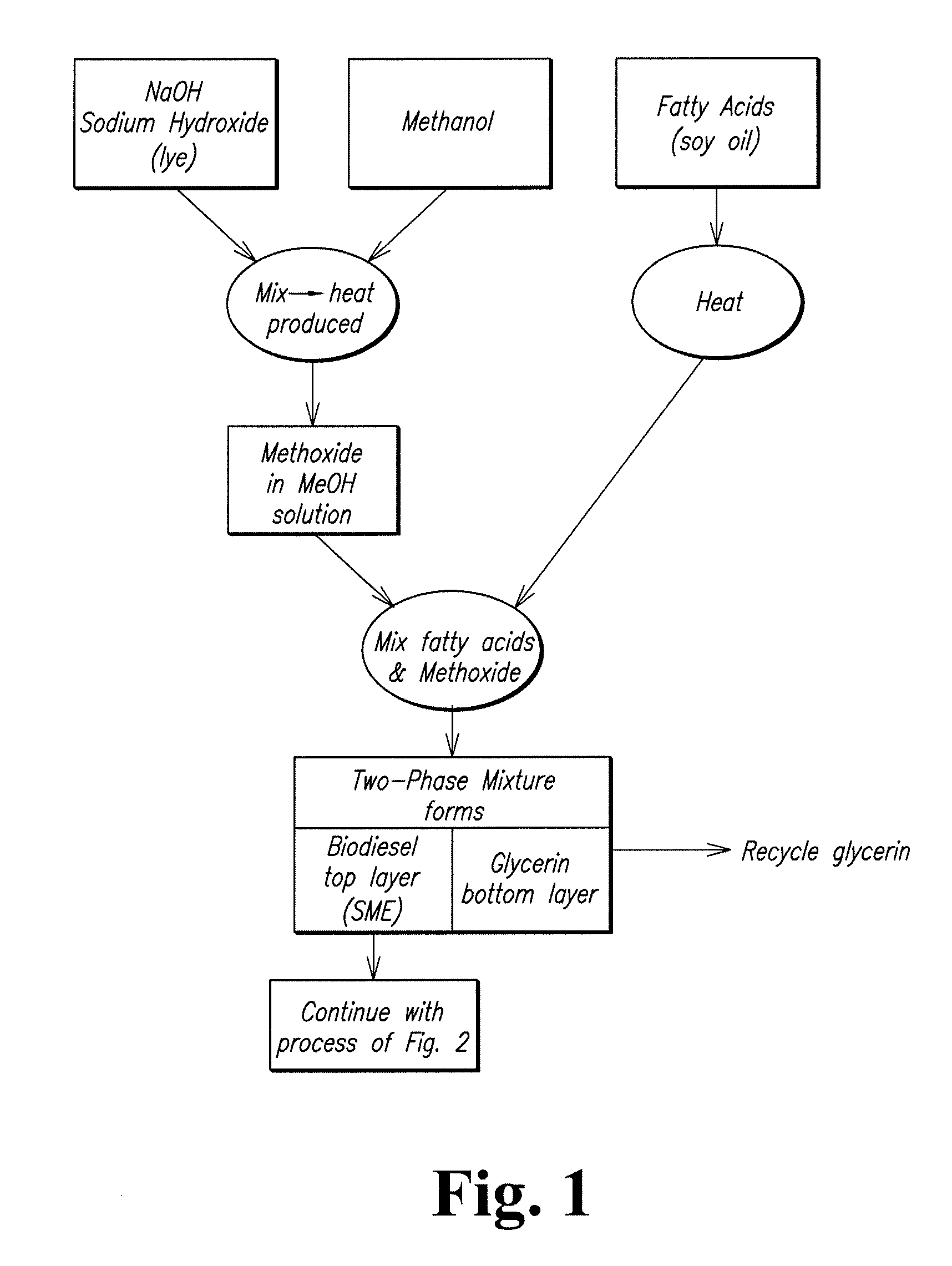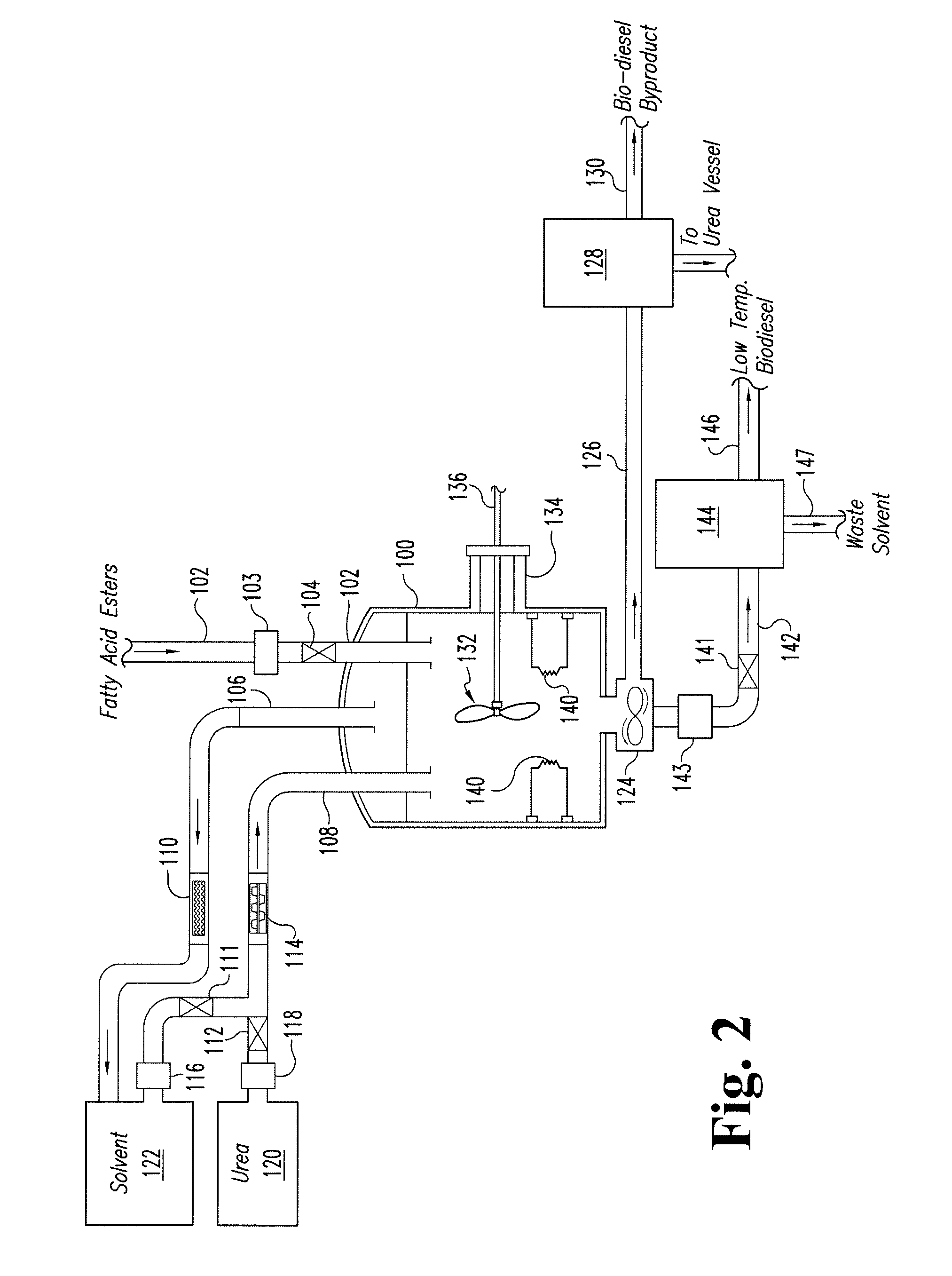Method of lowering the cloud point of fatty acid esters
a technology cloud points, which is applied in the field of fatty acid esters, can solve the problems of reducing the efficiency of solvent recycling, and reducing the cost of fuel supply to the engine, so as to achieve simple and efficient solvent recycling stream, reduce the cost of fuel supply, and facilitate the effect of process
- Summary
- Abstract
- Description
- Claims
- Application Information
AI Technical Summary
Benefits of technology
Problems solved by technology
Method used
Image
Examples
example 1
[0060]50 grams of Soy Methyl Esters and 25 g of urea were added to 125 ml of methanol. The mixture was heated to ˜55° C., with constant stirring in a round bottom flask. After all components were dissolved, the flask was connected to a rotary evaporator and the methanol was evaporated applying ˜20 in Hg of vacuum and a water bath at 60° C. 50 ml of hexane were added to the residual contents of the flask and the contents of the flask were shaken for 2-3 minutes and then transferred into a Buchner funnel. The hexane extract was recovered by vacuum filtration, transferred into a round bottom flask and connected to a rotary evaporator to flash off the hexane and thus recover the unsaturated-rich soy methyl esters. The yield was 69.1% of the initial SME mass. The FAE profile of the material before and after treatment is shown in Table 4.
TABLE 4FractionatedOriginal SMESMEFatty acid methyl esterCompositioncompositionMethyl palmitate (C16:0)10.5%4.3%Methyl Stearate (C18:0) 5.7%1.4%Methyl Ol...
example 2
[0061]20 grams of Soy Methyl Esters and 18 g of urea were added to 80 ml of methanol. The mixture was heated to ˜65° C., with constant stirring in a round bottom flask. After all components were dissolved, the flask was connected to a rotary evaporator and the methanol was evaporated applying ˜20 in Hg of vacuum and a water bath at 60° C. 50 ml of hexane were added to the residual contents of the flask and the contents of the flask were shaken for 2-3 minutes and then transferred into a Buchner funnel. The hexane extract was recovered by vacuum filtration, transferred into a round bottom flask and connected to a rotary evaporator to flash off the hexane and thus recover the unsaturate-rich soy methyl esters. The yield was 63.3% of the initial SME mass. The FAE profile of the material before and after treatment is shown in Table 5.
TABLE 5FractionatedOriginal SMESMEFatty acid methyl esterCompositioncompositionMethyl palmitate (C16:0)10.5%?Methyl Stearate (C18:0) 5.7%?Methyl Oleate (C1...
example 3
[0062]20 grams of Soy Methyl Esters and 2 g of urea were added to 30 ml of methanol. The mixture was heated to ˜40° C., with constant stirring in a round bottom flask. After all components were dissolved, the flask was connected to a rotary evaporator and the methanol was evaporated applying ˜20 in Hg of vacuum and a water bath at 60° C. 50 ml of hexane were added to the residual contents of the flask and the contents of the flask were shaken for 2-3 minutes and then transferred into a Buchner funnel. The hexane extract was recovered by vacuum filtration, transferred into a round bottom flask and connected to a rotary evaporator to flash off the hexane and thus recover the unsaturated-rich soy methyl esters. The yield was 92.1% of the initial SME mass. The FAE profile of the material before and after treatment is shown in Table 6.
TABLE 6FractionatedOriginal SMESMEFatty acid methyl esterCompositioncompositionMethyl palmitate (C16:0)10.5% 8.9%Methyl Stearate (C18:0) 5.7% 4.8%Methyl Ol...
PUM
| Property | Measurement | Unit |
|---|---|---|
| reaction time | aaaaa | aaaaa |
| pour point | aaaaa | aaaaa |
| pour point | aaaaa | aaaaa |
Abstract
Description
Claims
Application Information
 Login to View More
Login to View More - R&D
- Intellectual Property
- Life Sciences
- Materials
- Tech Scout
- Unparalleled Data Quality
- Higher Quality Content
- 60% Fewer Hallucinations
Browse by: Latest US Patents, China's latest patents, Technical Efficacy Thesaurus, Application Domain, Technology Topic, Popular Technical Reports.
© 2025 PatSnap. All rights reserved.Legal|Privacy policy|Modern Slavery Act Transparency Statement|Sitemap|About US| Contact US: help@patsnap.com



